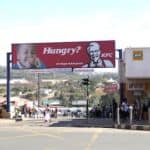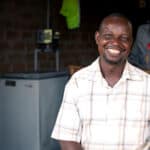PUE at the BoP: Three Approaches To Making Productive Uses Of Energy Accessible To All
Productive Use of Energy (PUE) technologies, such as solar water pumps, refrigeration and sewing machines, are crucial for helping smallholder farmers and other microentrepreneurs generate incomes, either through starting a new business or improving the economics of an existing one. But their up-front costs remain prohibitive for those at the Base of the Pyramid (BoP). For example, a solar water pump can easily cost over US $700, while a walk-in cold room can cost more than 10 times this price.
Selling income-generating appliances that can cost well above $1,000 to a low-income farmer or microentrepreneur puts all the risk on the farmer/entrepreneur and their business. In order to realise the true potential of PUE, the social enterprise sector needs to devise new business models that remove this risk so that the most vulnerable can access these life-changing technologies.
Three Approaches to Bringing PUE to the BoP
1. SERVICE MODELS
The real value of a PUE appliance is almost always the service it can provide. Therefore, rather than selling a machine, a company can offer that device’s service for a fee. Through this service model, microentrepreneurs and farmers can use expensive PUE products, regardless of their income level. This model can also better match the fluctuating incomes that are common in activities like farming, allowing costs to be incurred during harvest time, when farmers are generating more income.
This is something that is already commonly done among smallholder farmers in many parts of the world. In India, to take one example, a wealthier farmer will invest in a diesel irrigation pump and rent it out to their neighbours by the hour. In Uganda, a farmer will create extra revenue by hiring out their oxen, thereby providing dozens of farmers with access to the energy of this powerful beast without requiring them to invest in their own animal.
Businesses have also begun to embrace this practice. For instance, SokoFresh has adopted a unique approach in Kenya that makes the advantages of cold storage accessible to smallholder farmers. With a traditional sales model, the company’s off-grid, solar-powered, walk-in cold rooms would be prohibitively expensive for these farmers, as they cost thousands of dollars. So instead of attempting to sell this technology to the farmers directly, SokoFresh takes on the role of a fresh produce buyer. It provides farmers with advice and training to help maximise the quality of the avocados, bananas and pineapples it buys from them. Then it utilises its cold rooms to ensure that this produce doesn’t spoil in the time it takes to source it from multiple small farms. This allows SokoFresh to bring high-quality produce from smallholder farmers to bulk buyers and even exporters who are willing to pay higher prices. This approach not only benefits smallholder farmers by providing them with better prices and reducing post-harvest losses, it also spares them from the financial burden of investing in such cooling technology. Additionally, SokoFresh offers cooling-as-a-service to exporters, who rent its cold rooms to enable more efficient produce collection from the smallholder farmers they have contracted.
The service model approach is particularly beneficial for farmers, as the scale of smallholder farms rarely justifies the cost of these technologies. But to make it worthwhile for companies, they must ensure that their equipment is constantly used by farmers throughout the changing seasons. SokoFresh does this by making its cold rooms portable. Following the harvest of different fruits and vegetables, the company moves its equipment across different regions to ensure that its cold rooms are always kept full. Innovations that can solve this utilisation-rate challenge will be key to scaling-up service models for other productive use appliances.
2. COMMUNITY OWNERSHIP
Service models offer numerous benefits, but a potential issue they face is the concentration of wealth among those who can afford to pay the high up-front costs of investing in their own PUE equipment. It falls upon social entrepreneurs to make sure that the advantages of these services reach people living in poverty. Systems of shared ownership can address this by ensuring that these benefits are spread among the community, leading to greater impacts on the incomes of the poorest. Promethean Power Systems is taking this approach to bring the benefits of decentralised milk chilling to farmers in India. In Maharashtra, where Promethean works, many families generate a small extra income by tending to one or two cows and selling their milk, an activity that is usually managed by the women of the household. But limited access to markets and inefficiencies in the collection of milk have led to frequent wastage, and caused farmers to receive unfair prices for their milk from dairy companies. As a result, farmers have limited confidence to invest in expanding their dairy activities.
Promethean solves this challenge by leveraging a community-ownership model to provide micro milk chillers which can keep four to six cans of milk fresh. It sells the chillers up-front or via a pay-per-use model to groups of 10 to 15 women that aim to build sustainable livelihoods via dairy farming. Promethean also ensures that these groups have reliable access to a market for their milk by purchasing the milk collected at the micro-chiller. Often facilitated by Promethean and its NGO partners, these women can form a Farmer Producers Group (FPG), which gives them easy access to low-cost loans to expand their dairy farming and improve their earnings per litre of milk they produce — for instance, by purchasing new cattle varieties. As part of this collectivisation, one group member is chosen to collect, test and measure the milk each morning and evening. But all the group members share the profit generated by the micro-chiller, which allows them to sell higher-quality milk to Promethean for a fair price rather than selling to lower-paying dairy companies. The shared ownership model also keeps utilisation rates high and unit economics profitable.
The success of this model hinges on two crucial aspects: market off-take and partnerships. Promethean has established a strong partnership with various community stakeholders, including Swayam Shikshan Prayog (SSP), an NGO that has been working within the same communities for more than a decade to train groups of women farmers on new practices to improve their livelihoods. By tapping into the strong community relationships and expertise of partners such as SSP, Promethean has been able to rapidly expand its community ownership model to new farming collectives, and to scale this model to empower smallholder farmers to build profitable dairy businesses and more sustainable livelihoods.
3. SELLING TO ESTABLISHED MICROENTREPRENEURS
These service models and shared ownership approaches lend themselves particularly well to many PUE applications within agriculture, but they are not always practical for some agri value chains or other types of businesses. Sometimes, energy appliances only make sense when owned and operated by one user, such as a hair clipper used in a barber shop or a refrigerator used by a shopkeeper to sell cold drinks — items that would be difficult to share without impacting the owner’s business. And just because a PUE appliance should generate income, that’s no guarantee that it automatically does. When a farmer or microentrepreneur invests in an expensive PUE appliance there is a large risk of over-indebtedness, making it all the more crucial that the appliance drives an increase in their income.
One approach to mitigating this risk is to focus on established business cases. Every PUE product will affect a microentrepreneur’s unit economics differently, so identifying businesses with low failure rates and quick investment returns on the energy appliance is key. PUE products that fit this bill might include appliances that generate improvements to the economics of an existing business (e.g., replacing diesel or petrol generators with solar systems), or those that fix inefficient value chains (e.g., freezers for fish traders). Providing customers with financing so they can pay off the high up-front cost of these devices over time is far easier if the customer is able to make small, regular payments. So (absent a service model like those discussed above), businesses that can deliver steady year-round incomes will be more appropriate when selling PUE appliances on finance, compared to those that only earn income two or three times a year, such as arable farming enterprises. But regardless of the sector their customers work in, companies trying to sell PUE products on finance need to consider what other support these farmers or microenterprises may need to ensure that their investment turns a profit.
Winock Solar has taken on this challenge to sell solar home systems and PUE appliances on credit to microentrepreneurs in Nigeria who are otherwise reliant on petrol-powered generators. Winock has focused on appliances that can deliver regular incomes, such as shop freezers, sewing machines, hair clippers for barbers and chargers for phone charging businesses. It has also partnered with a microfinance institution to facilitate inventory credit — one of the biggest challenges facing small businesses in Nigeria. By focusing on specific types of businesses, and supporting them beyond the energy product itself, Winock has been able to provide a product that costs as much as $2 per day to a customer segment living on less than $3.20 per day. According to a recent study of Winock’s customers conducted by 60 decibels, these microentrepreneurs represent 44% of the company’s customers.
What’s needed to make PUE inclusive
Productive uses of energy have the potential to create pathways out of poverty for millions, but challenges still remain in putting that potential into practice. As larger and more expensive productive appliances come to market, we need more diversity in business models that move beyond direct ownership and avoid burdening the poorest with heavy debts. The shared, decentralised infrastructure provided by PUE appliances and the solar energy systems that power them can enable even the poorest farmers and microentrepreneurs to access the benefits of these technologies — and new business models are starting to make these solutions scalable. But just as importantly, as Acumen has argued before, new tech alone doesn’t automatically translate to more income.
We must go beyond focusing on simply selling PUE products to also engage the ecosystem that surrounds that new asset, from offering market access, to providing complementary products. This will ensure that these productive use appliances meet their true potential of delivering improved incomes and livelihoods for those living in poverty.
Christopher Emmott is the Associate Director of Investing in Energy Access at Acumen.
Photo credit: IWMI/Prashanth Vishwanathan.
- Categories
- Agriculture, Energy, Social Enterprise, Technology



